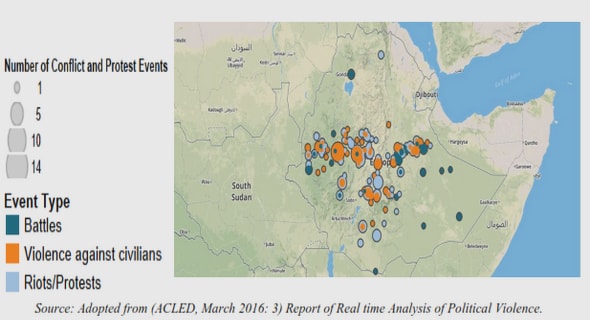(Downloads - 0)
For more info about our services contact : help@bestpfe.com
Table of contents
I. GENERAL INTRODUCTION
1.0 Introduction
1.1 Overview of chapters and results
1.2 Publications and abstracts from this dissertation
1.2.1 Publications
1.2.2 Abstracts
I. INTRODUCTION GÉNÉRALE
1.0 Introduction
1.1 Résumé des chapitres et principaux résultats
1.0 Introducción
1.1 Distribución de los capítulos y resultados
II. PLATE TECTONIC EVOLUTION OF THE NORTHERN ANDEAN REGION
2.0 Introduction
2.1 Tectonic assembly of the Northern Andes
2.2 Pangaea break-up and origin of the Caribbean plate
2.2.1 Continental rifting and formation of structural discontinuities
2.2.2 Origin of the Caribbean plate, the western and central Cordillera (Ecuador and Colombia)
2.2.3 Maracaibo block rotation, reactivation of paleo-structures
2.3 Current tectonic models for the origin of the Venezuelan Andes
2.3.1 Symmetric models
2.3.2 Asymmetric models
.3.3 Present-day tectonic
III. APATITE FISSION-TRACK THERMOCHRONOLOGY
3.0 Introduction
3.1 Fission-track formation theory
3.2 Fission-track age equation
3.2.1 External detector method and z calibration method or Z factor
3.3 Conventional statistics for in-situ FT thermochronology
3.3.1 Estimators for R
3.3.1.1 Isochron fitting
3.3.1.2. Mean ratio
3.3.1.3 Pooled Mean
3.3.1.4. Central Age
3.3.2 Standard error on fission-track age
3.3.3 Galbraith test
3.4 Fission-track annealing and modeling
3.5 Length measurements
3.6 Analytical procedure
3.7 Detrital apatite fission-track thermochronology
3.8 Conventional statistics for detrital FT thermochronology
3.9 Data interpretation and quantitative thermochronology methods
3.9.1 Quantitative thermochronology
IV. SPATIAL AND TEMPORAL PATTERNS OF EXHUMATION ACROSS THE VENEZUELAN ANDES: IMPLICATIONS FOR CENOZOIC CARIBBEAN GEODYNAMICS
4.0 Abstract
4.1 Introduction
4.2 Geodynamic setting and structure of the Venezuelan Andes
4.3 Methods and analytical procedures
4.3.1 Topographic characteristics
4.3.2 Apatite fission-track thermochronology
4.3.3. Thermal history modeling
4.4 Results
4.4.1 Topographic characteristics
4.4.2. Apatite fission-track data
4.5 Discussion
4.6 Conclusions
4.7 Acknowledgements
V. THERMOCHRONOLOGIC EVIDENCE FOR KM-SCALE VERTICAL OFFSET ACROSS THE BOCONÓ STRIKE-SLIP FAULT, CENTRAL VENEZUELAN ANDES
5.0 Abstract
5.1 Introduction
5.2 Tectonic setting
5.3 Thermochronology data
5.3.1 Methods
5.3.2 Results
5.4 Numerical modeling
5.5 Discussion and conclusions
5.6 Acknowledgements
VI. TECTONIC VERSUS CLIMATIC CONTROLS ON EXHUMATION IN THE VENEZUELAN ANDES
6.0 Abstract
6.1 Introduction
6.2 Tectonic, geomorphic and climatic setting
6.2.1 Geological evolution and exhumation history
6.2.2 Relief
6.2.3 Seismicity
6.2.4 Precipitation pattern
6.3 Detrital apatite fission-track thermochronology
6.3.1. Data collection and discrimination of age components
6.3.2 Comparison of detrital and bedrock apatite FT ages
6.3.3 Implications for sediment provenance
6.4 Predicted exhumation and erosion patterns
6.4.1 Long-term exhumation rates
6.4.2 Short-term erosion patterns
6.5 Discussion
6.5.1 Relations between tectonics, climate and erosion in the VA
6.6 Conclusions
6.7 Acknowledgements
VII. STRATIGRAPHY AND PROVENANCE OF THE MÉRIDA ANDES PRO- AND RETRO-SIDE FORELAND BASIN DEPOSITS: INSIGHTS FROM DETRITAL APATITE FISSION-TRACK THERMOCHRONOLOGY, PALYNOLOGY, AND SEDIMENT PETROLOGY.
7.0 Abstract
7.1 Introduction
7.2 Geologic setting
7.3 Stratigraphic analysis and sample collection
7.4 Methods
7.4.1 Detrital apatite fission-track thermochronology
7.4.2 Palynological analysis
7.4.3 Characterization of organic matter
7.4.3.1 Characterization by Rock-Eval pyrolysis
7.4.3.2 Determination of total carbon content by elementary analysis (LECO)
7.4.3.3 Calcimetric measure
7.4.4 Sediment petrology
7.5 Results
7.5.1 Detrital apatite fission-track thermochronology
7.5.2 Palynological analysis
7.5.4 Sediment petrology
7.5.5 The Río Hoyos-Río Vichú stratigraphic section
7.5.6 Parángula River stratigraphic section
7.6 Discussion
7.6.1 Stratigraphy and provenance of the two foreland basins
7.6.1.1 Depositional environments
7.6.1.2 Depositional ages
7.6.1.3 Sediment provenance
7.6.2 Neogene exhumation history of the Mérida Andes
7.7 Conclusions
7.8 Acknowledgements
VIII. GENERAL CONCLUSIONS
8.1 Conclusions
8.2 Synthesis
8.3 Future perspectives
VIII. CONCLUSIONS GÉNÉRALES
8.1 Conclusions
8.2 Synthèse
8.3 Perspectives et avenir
VIII. CONCLUSIONES GENERALES
8.1 Conclusiones
8.2 Síntesis
8.3 Perspectivas a futuro
REFERENCES
APPENDIX


